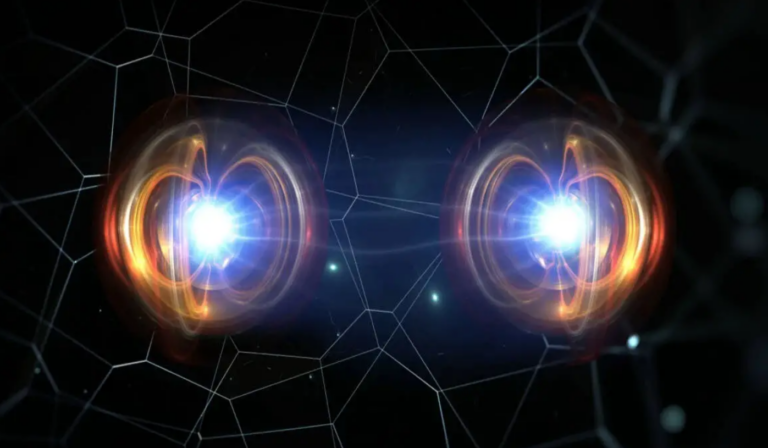We are closer to achieving super-fast quantum teleportation with 90% accuracy over 44km away
There is a continuous advancement in the creation of a robust and reliable quantum internet. High-fidelity quantum information has been ‘teleported’ by them over a distance of 44 kilometers (27 miles).
High data quality and the ability to transmit data over large distances are two key features in realizing a complete quantum internet. Any developments in these areas are therefore good news for researchers interested in the next-generation communications network.
In this specific discovery, the researchers were also able to attain more than 90 percent fidelity in their quantum information while sending it through fiber optic telecommunication channels like the ones today’s internet uses.
Physicist Panagiotis Spentzouris of the Fermilab particle physics and accelerator laboratory based at the California Institute of Technology said these results enthralled him. He noted that this achievement is a milestone towards transforming communication technology across the globe.
Quantum internet is the use of qubits, or particles that have not been observed and can be in several states at once, like an undecided dice. When qubits interact, they become ‘entangled’, a term that comes into play when the state of the particles is measured. This interconnection can be compared to two dice that always total seven, no matter the rolls on each die. Therefore, information entered at one location is immediately available at another location.
It turns out that when three qubits are cleverly entangled, one particle’s state can be used to mimic the ‘dice roll’ of another via the third. In quantum terms it is similar to swapping one particle for another and transferring its information across a distance almost as soon as it takes place.
However, entanglement has to be first created and then maintained as the qubits are transported to their final locations through optical fibers (or satellites).
Quantum information is very fragile and sensitive and this poses a problem on how to transport entangled photons over long distances without distortion. Longer optical fibers merely bring in more noise which destroys the entangled states.
The total length of fibre required to transmit each qubit was 44km, establishing a limit beyond which entangled qubits cannot be usefully teleported while transferring quantum information.
This has not been done before over such a great distance with the same level of accuracy making a city size quantum network one step closer to reality even though further research is required.
‘With this demonstration, we are setting the stage for the creation of a metropolitan quantum network in the Chicago region,’ said Spentzouris.
Quantum entanglement and data teleportation are complicated areas and even the greatest minds have no clue how they can be incorporated into a quantum network. However, each successful proof of concept, like this one, brings one step closer to the implementation of such a network.
A quantum internet would also offer high levels of security – any effort to compromise it would be compared to trying to open a very safe lock. At the moment, it is expected that quantum internet networks will be specialized spin-offs of Internet rather than replacements.
What distinguishes this work is the precision and distance of the quantum entanglement teleportation, as well as the ‘off the shelf’ equipment employed; it should be quite simple to scale up this technique using the gear we already have in place.
“We are very proud to have achieved this milestone on sustainable, high-performing, and scalable quantum teleportation systems,” adds physicist Maria Spiropulu of Caltech.
The findings have been reported in PRX Quantum.
Do not forget to share your opinion with us to provide you with the best posts !




0 Comments